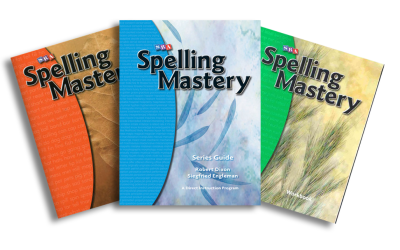Direct Instruction (DI) offers a highly structured approach to teaching reading through carefully planned steps. It breaks down lessons into small, manageable units, building on each other. DI uses explicit teaching with clear, simple language and demonstrations, ensuring students understand without guessing. The method progresses logically from simple to complex tasks, with consistent practice for mastery.
In the Australian educational context, DI is particularly relevant. It supports the Australian Curriculum’s goals to enhance literacy and critical thinking. DI meets literacy requirements, such as fluency, comprehension, and engaging in language activities, and allows for tailored instruction for diverse student needs. Its effectiveness in boosting reading outcomes is backed by evidence, showing improvements in phonics and comprehension. This aligns with the curriculum’s emphasis on evidence-based teaching methods.
2. Preparing to Teach Reading Mastery Using Direct Instruction
To ensure educators are fully equipped to deliver Reading Mastery through Direct Instruction, we’ll cover the foundational steps necessary for thorough preparation, including understanding the DI framework, tailoring the approach to meet individual student needs, and integrating DI principles into lesson planning and execution.
2.1 Classroom Environment
Seating Arrangements for Optimal Engagement
To create an engaging and effective learning environment, consider arranging seats in a U-shape or semi-circle. This setup guarantees that each student can see you (the teacher) and the board clearly, which is vital for direct instruction. Additionally, take stock of the needs of students with special requirements and make any necessary adjustments to ensure that the classroom is accessible and engaging for everyone.
Display Areas for Visual Aids
By allocating areas on classroom walls or boards to showcase educational aids like phonics charts and word lists, you can greatly enrich the learning environment. Furthermore, the introduction of interactive whiteboards or digital screens brings lessons to life, seamlessly blending multimedia elements into everyday learning, thereby enhancing the educational experience.
2.2 Materials Preparation
Essential DI Materials
The core of direct instruction involves scripted lesson plans that detail the teaching process, expected student interactions, and responses. Student books and worksheets should be closely aligned with the curriculum and structured to effectively support the direct instruction methodology.
Supplementary Materials
Phonics cards, sound charts, alphabet strips, and word walls serve as essential supplementary materials. These tools aid in the systematic teaching of reading skills by providing visual and textual representations of sounds and letters. Additionally, you can use manipulatives and games to improve phonemic awareness and decoding skills.
2.3 Establishing Routines
Daily and Weekly Routines
Another important aspect of direct instruction is establishing a clear start-up routine, including reviewing the previous day’s work and introducing the new lesson. In your introduction to the new lesson, dedicate specific times for various reading activities—such as phonics, reading comprehension, and fluency practice. This fosters a consistent and focused learning environment.
Procedures for Transitions and Handling Materials
Always ensure efficient procedures for switching between activities and handling classroom materials. For example, set out clear steps for students to follow when they need to get, use, and return materials. This minimises disruptions and maximises learning time.
3. Core Components of a DI Reading Program
3.1 Phonemic Awareness
- Practical activities for teaching sounds: To teach sounds effectively, start with explicit instruction that introduces each sound, using visual and auditory cues to aid understanding. For instance, you can engage your students in “sound sorting” activities, where they categorize items based on the initial, medial, or final sounds they produce. This hands-on approach makes learning more interactive and enhances their ability to distinguish between different sounds.
- Games and exercises to reinforce sound recognition: Moving on, you can reinforce sound recognition by incorporating interactive games like “phoneme pop.” In this game, children have the fun task of ‘popping’ balloons that feature letters representing the targeted sounds. Additionally, you can introduce rhyming games, which are great for bolstering their ability to listen for and repeat specific sounds effectively.
3.2 Phonics and Decoding
- Step-by-step guide on introducing letter sounds and combinations: Start by systematically introducing individual letters, then gradually progress to common letter blends and digraphs. To make this process more interactive, you can use visual aids and tactile materials like letter tiles or magnets, which help in building words.
- Techniques for blending sounds to form words: During guided practice sessions, focus on elongating sounds and connecting them smoothly to teach sound blending. These sessions aim to encourage students to blend sounds seamlessly, transitioning from segmented presentations to creating complete words. It’s important for you to emphasise continuous practice, as this will significantly aid in their learning process.
3.3 Fluency
- Developing reading speed and accuracy strategies: Start by organising regular timed reading sessions to polish fluency, where you provide immediate feedback and corrections. As a teacher, demonstrate fluent reading yourself, setting a strong example. Then, engage students in choral and echo reading activities, allowing them to practice and absorb the rhythm and flow of fluent reading.
- Implementing timed readings and fluency drills: To foster improvements in speed, accuracy, and expressive reading, introduce repeated reading practices with selected passages. This method not only enhances fluency but also builds confidence. You can also put to use some fluency tracking charts. These are powerful tools for monitoring and motivating, making their development tangible and encouraging continuous improvement.
- 3.4 VocabularyMethods to teach new words contextually and through direct explanation: You should always introduce vocabulary within the rich context of sentences and stories to aid comprehension. Additionally, make sure to provide detailed explanations of word meanings, weaving in lessons on synonyms, antonyms, and their practical usage in sentences.
- Activities to integrate new vocabulary in daily use: To ensure this new vocabulary becomes a part of your students’ daily lexicon, encourage them to apply these words in their own speaking and writing activities. You can foster this integration by promoting regular review sessions and reinforcing newly learned terms through engaging methods like word walls and personal dictionaries.
3.5 Comprehension
- Techniques for teaching how to find the main idea, make inferences, and summarise: Start by implementing guided practice sessions that gradually increase in complexity, helping students to identify main ideas and make inferences. You can make this process more interactive by using activities like “think– alouds,” where you model the process of making inferences aloud, demonstrating step by step how to unravel the text’s deeper meanings.
- Different types of questions to assess comprehension: Begin with explicit questions that target the foundational “who, what, when, where, why, and how” of the texts to gauge basic comprehension. Then, elevate your assessment techniques by incorporating higher-order questions. These should challenge students to analyse, evaluate, and create new understandings based on the material they’ve read, pushing them beyond mere surface-level engagement with the text.
Sources and Further Reading:
- Carnine, D., Silbert, J., Kame’enui, E. J., & Tarver, S. G. (2004). Direct Instruction Reading (5th ed.). Upper Saddle River, NJ: Pearson Education, Inc. (Comprehensive methods on DI reading strategies)
- National Reading Panel (U.S.), & National Institute of Child Health and Human Development (U.S.). (2000). Report of the National Reading Panel: Teaching children to read: An evidence-based assessment of the scientific research literature on reading and its implications for reading instruction. [Link to NRP Report]
- Vaughn, S., & Linan-Thompson, S. (2003). “What is special about special education for students with learning disabilities?” Journal of Special Education, 37(3), 140-147. (Discussion on differentiated strategies for special education within DI frameworks).
4. Lesson Planning and Execution
4.1 Structuring a DI Lesson
When developing a Direct Instruction (DI) lesson, you should look to include these three key parts:
- Introduction: At this stage, you need to clearly state the learning objectives and review content related to the new material. Give a brief and engaging introduction, utilising questioning to assess students’ prior knowledge and prepare them for new concepts.
- Body: This section presents new information in small, manageable steps, using scripted language to maintain clarity and consistency. The lesson’s body includes guided practice with high levels of teacher-student interaction and immediate error correction to reinforce understanding.
- Conclusion: The lesson concludes by summarising the key points, reiterating important concepts, and previewing the next lesson. This helps students make connections with the material they have learned and understand its relevance to upcoming content.
4.2 Delivering a Lesson
Effective delivery of a DI lesson can be achieved through:
- Scripted dialogues and specific teacher prompts: By using scripted dialogues, you ensure every part of the curriculum is covered consistently and thoroughly. For example, when teaching reading mastery, you might use a script to introduce new vocabulary, ensuring you don’t miss any crucial words. Specific prompts like “Can you tell me what ‘synthesize’ means in your own words?” help you gauge if students grasp the concept or hold any misunderstandings. This active approach keeps students engaged and allows for immediate correction and reinforcement.
- Techniques for maintaining student engagement and managing classroom behaviour: To boost reading mastery, keep your lessons moving quickly, mix in different types of activities, and always use positive reinforcement. For managing behaviour effectively, set clear classroom rules and provide immediate corrective feedback.
4.3 Assessment and Feedback
- Regular assessments to track progress: DI lessons should regularly include assessments that align with the curriculum, allowing us to track progress for each student and the class as a whole. By doing this, we get valuable insights that help us make better teaching choices and tailor our lessons to meet our students’ needs. For instance, in teaching reading mastery, these assessments can show us who needs more help with phonics or who’s ready to move on to more complex texts, enabling us to adapt our approach in a way that supports everyone’s learning journey.
- Providing constructive feedback and corrections: Giving immediate, specific feedback right in the middle of lessons, and also right after, is super important for clearing up any confusion. For example, when it comes to mastering reading, this could mean pointing out a mispronounced word on the spot or discussing the main idea of a passage right after reading it. On top of that, having structured feedback sessions lets students take a moment to really think about what they’ve learned. It’s like when a student reflects on a story’s characters and plot, understanding better what they need to improve in their reading skills. This kind of approach makes learning a lot more personal and effective.
Sources and Further Reading:
- Engelmann, S., & Carnine, D. (1982). Theory of Instruction: Principles and Applications. Eugene, OR: ADI Press.
- Hattie, J., & Timperley, H. (2007). “The Power of Feedback.” Review of Educational Research, 77(1), 81-112.
- Archer, A. L., & Hughes, C. A. (2011). Explicit Instruction: Effective and Efficient Teaching. New York: Guilford Publications.
5. Differentiation and Inclusion
It’s vital to ensure every student gets learning opportunities tailored to their unique needs. By using differentiation and inclusion strategies, teachers can tweak their methods to suit the varied needs of everyone in their class.
5.1 Adapting Lessons for Diverse Learners
Modifications for students with learning difficulties:
- Simplify language but ensure instructions remain comprehensive, making learning accessible to all students.
- Employ multisensory approaches integrating visual, auditory, and kinesthetic activities to address various learning preferences and needs.
- Break down tasks into smaller, achievable steps to aid in understanding and mastery.
Modifications for ESL students:
- Use visual aids and provide context clues to aid comprehension and bridge language barriers.
- Conduct frequent checks for understanding and provide ample opportunities for verbal practice to support language development.
- Slow down the pace of instruction, allowing ESL students extra time to process new information in a second language.
Extensions for advanced learners:
- Offer opportunities for deeper examination of subjects through methods like project-based learning and independent research.
- Engage these students with higher-order thinking tasks and challenges that push beyond the standard curriculum expectations.
5.2 Group work and individual instruction
Strike a balance between whole-class instruction, which is effective for introducing new concepts and general practice, and smaller group or individual sessions, which allow for targeted skill development and personalised support.
Effective groupings for differentiated learning:
- Implement strategic grouping based on skill level, learning preference, or specific educational needs to enhance learning outcomes.
- Adopt a rotational model for activities, enabling students to work independently, in collaboration, and directly with the teacher, catering to a wide range of learning styles and needs.
Sources and Further Reading:
- Tomlinson, C.A. (2001). How to Differentiate Instruction in Mixed-Ability Classrooms. Alexandria, VA: ASCD.
- Bender, W. N. (2012). Differentiating Instruction for Students With Learning Disabilities: New Best Practices for General and Special Educators. Corwin Press.
6. Conclusion and Future Directions
This article has systematically outlined the importance and effectiveness of Direct Instruction (DI) in enhancing educational outcomes, particularly in the domain of reading mastery. DI facilitates a structured and efficient learning environment by emphasising scripted dialogues and specific prompts, maintaining student engagement, employing regular assessments, and providing constructive feedback.
We encourage educators, administrators, and curriculum developers to explore the potential of GGSA’s Reading Mastery Curriculum program within the Direct Instruction framework. This program embodies the principles discussed in this article and offers a comprehensive, evidence-based approach to reading instruction that can markedly benefit students across diverse learning environments. Together, by employing these strategies, we can continue to refine our educational practices and contribute to the lifelong success of our learners.
Sing up to GGSA today to unlock 100s of free classroom-ready resources built using Direct Instruction.



